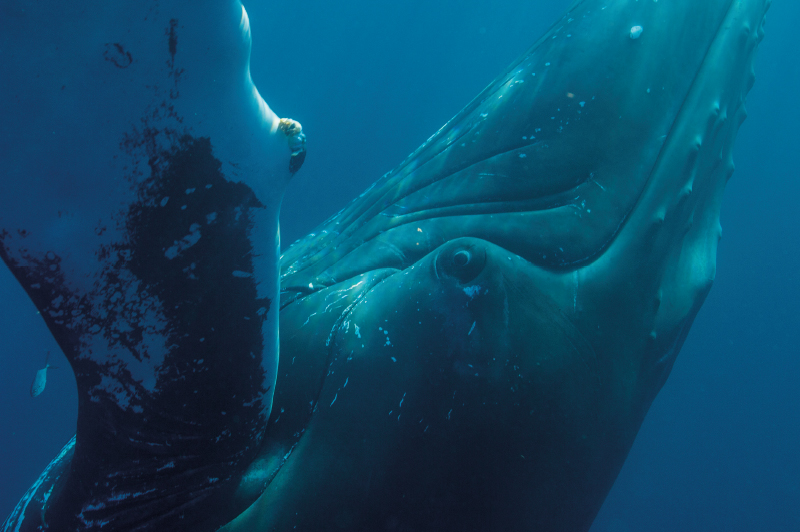
A Caribbean Cooperation Project inaugurated early this year, the goal of CAMAC is to reduce the interactions between marine megafauna and human activities.
During the third Humpback Whale World Congress, on Thursday, March 9, in Santo Domingo in the Dominican Republic, the Agoa Sanctuary/French Office for Biodiversity, and the CAR SPAW officially unveiled their new joint endeavor: The CAMAC project, for CAribbean marine Megafauna and anthropogenic ACtivities.
The inaugural ceremony illustrated the willingness of the various participants to commit to working together to protect marine mammals, starting with roundtables and discussions. As a result, 32 representatives of 22 organizations and 12 Caribbean countries (or islands) participated in these think tanks, during which they examined four different thematic topics. Expected to extend over five years, CAMAC hopes to provide Caribbean governing bodies and environmental stakeholders with recommendations and tools to reduce the negative impact of interactions between marine megafauna and human activities. To do so, for example, the project plans to reinforce communication between the fishing industry — and evaluate its interactions with marine megafauna — increase knowledge about the impact on these animals, and better define their repartition and concentration in the Caribbean thanks to a regional inventory. CAMAC also plans to raise awareness about the conservation of marine megafauna and strengthen environmental education skills.

Extremely vulnerable, marine mammals in their natural habitats in the Caribbean are often subject to fishing boats, tourism activities (such as whale-watching), and maritime traffic. As a result, serious injuries and behavioral modifications are frequently observed with this megafauna, and interactions between occupations and the animal can paralyze certain human activities as well: accidentally catching them, damage to fishing equipment, etc. The CAMAC project is part of a global effort representing urgency to improve our understanding of the repercussions caused by our interactions with nature, and to try and reduce the impact of mankind on the environment. This initiative has spread across the Lesser Antilles and as far as Jamaica and Haiti, as well as the Guiana plateau, thanks in part to European funding (FEDER) as part of the Caribbean Interreg program.
A CONGRES STARTED IN THE INDIAN OCEAN
Held for the first time this year in the Caribbean, the Humpback Whale World Congress was born in Madagascar in 2015. Organized by Cétamada, a non-profit organization in Madagascar, this event unites numerous participants from the scientific community with the public and students to share knowledge about the study and protection of humpback whales.
Auteur : Olivier Aussedat
MORE INFORMATION : https://sanctuaire-agoa.fr/editorial/camac ; https://sanctuaire-agoa.fr/editorial/lancement-du-projet-camac

